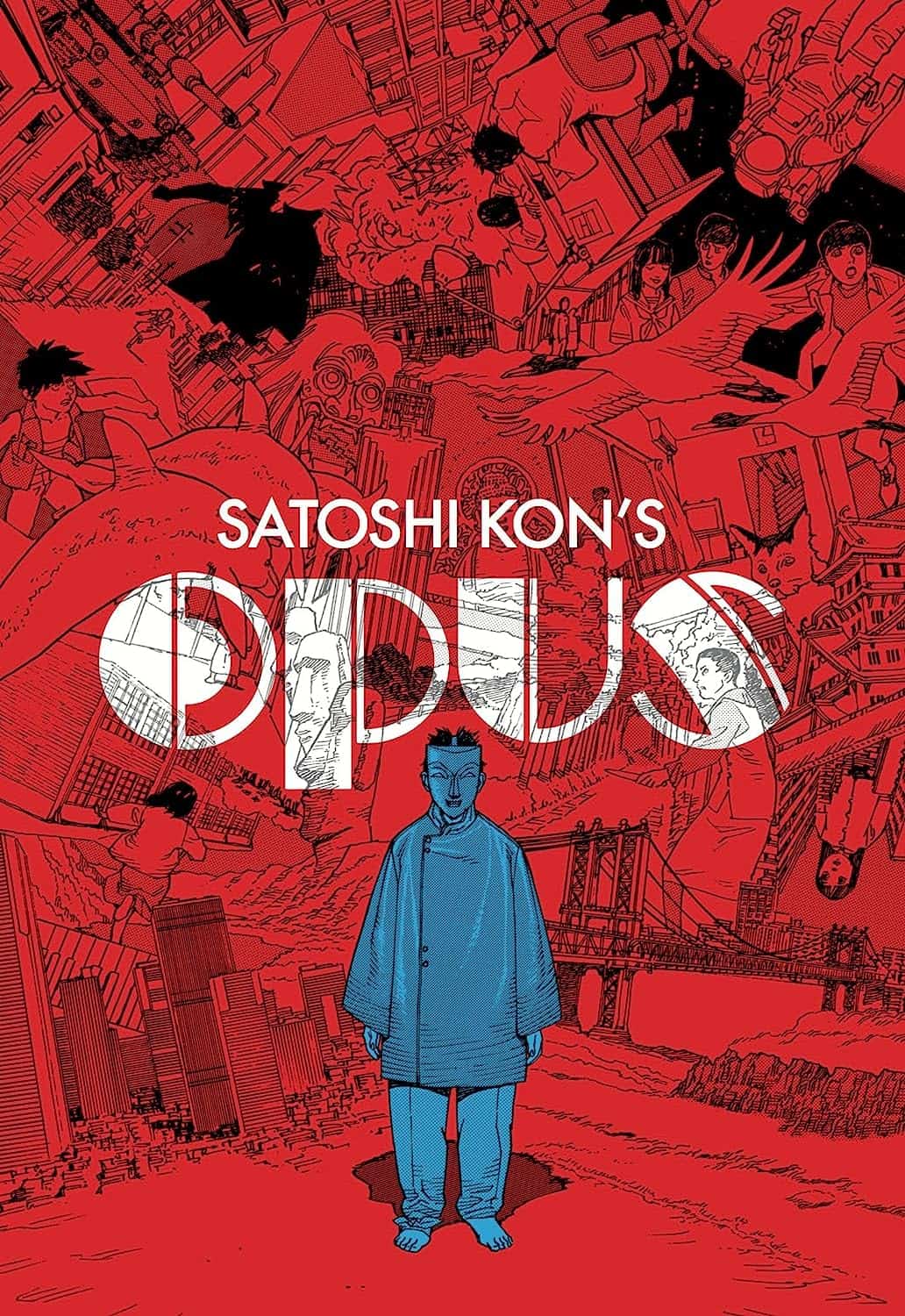Satoshi Kon is an artist most commonly known for his limited, yet striking output of feature films, including “Perfect Blue”, “Millennium Actress”, “Tokyo Godfathers”, and “Paprika”. However, prior to his film debut, Kon had actually gotten his start as a manga artist, or mangaka. The work he produced in this field, though equally limited as his film output, was similarly impressive. The most notable,and the most famous of these works is “OPUS,” a mind-bending dreamlike piece of metafiction, which foreshadows the themes and style of Kon's future projects.
The manga begins in the midst of a climactic scene featuring a confrontation between the main protagonist Satoko and her nemesis. This is the first example of “OPUS”‘s many illusions, as the scene is revealed to simply be a draft for an in-universe manga titled “Resonance” currently being drafted by its author. Here we are presented with the true protagonist of the story: a disheveled, unheroic,mangaka named Chikara Nagai. Nagai talks with his editor about his plans to kill off one of the manga's secondary protagonists, Lin, in the story's finale. This plan is interrupted when Lin himself, unhappy with his inevitable end, crawls out of a drawing into the real world and steals the page of the manuscript containing his death scene. Nagai chases after Lin and inadvertently enters the world of “Resonance.” The story continues as a nesting doll of metafiction. It climaxes with an abrupt end, featuring a cameo from the true author himself, Satoshi Kon.
In 1996, “OPUS” was in the midst of serialization. However, Kon's attention shifted when he began working on “Perfect Blue,” which led him to put “OPUS” on hiatus. Unfortunately, the project was left abandoned and its story never received an ending to justify the cliffhanger- to the author's own anguish. Following Kon's death, a roughly sketched draft of the manga's final chapter was found. It featured the apologetic author in the “real world,” as he faces demands from his editors. This epilogue does little to mend the wound left by the original ending, yet, in that respect, it is perhaps the perfect ending to such a meta story about the struggles of a mangaka. It is ‘life imitating art' at its most unexpected and most ironic.
Check also this interview
The existentialist themes found in “OPUS” are likely reflections of how Kon felt at that period in his life. Even the manga's protagonist, Nagai, is seemingly modeled after Kon's own appearance, sporting the same glasses, and during certain scenes, even ponytail. The internal struggles of mangakas are portrayed almost allegorically, in this story about an author confronted by his own ‘Frankenstein's monster' so to speak. Since Nagai, or Kon, is the ‘god' of this world, then that would mean that all the characters are, in part, extensions of his own character. The villain of “OPUS,” and in the manga world “Resonance” even mentions this to Nagai when stating “I've always been part of you.” All the suffering in the world of “Resonance” comes from the imagination of the creator, Chikara Nagai, and then in turn Satoshi Kon himself. There seems to be an almost perverse need for authors to create cruel stories and torment their characters, so that readers will be entertained. When asked by Satoko why the story has to be so sad, and why everyone has to be tortured, Nagai responds “well I had to keep it interesting.” This much is true, were everyone to be happy, were everything to go well, there would be no story- Nagai and all mangakas know this. In this way, the story and its characters all seem to be reflective of an inner dialogue Satoshi Kon is having with himself.
The art style found in “OPUS” is not over-detailed, but that is not to say that it is simple. Rather, the complexity comes from the inventive visuals and the overlapping of ideas. For example: there are moments in which we believe we are seeing an image happening in the “reality” of the manga, only for it to be revealed that what we are seeing is a character reading a manga in-universe. The idea of perspective is similarly played with: characters managing to knock over the backdrops like dominos, wandering amid waist high buildings, replicating the imagery found in Kaiju films. This is “OPUS”'s greatest strength, the endless creativity with which it bends the rules of manga. However, as a result, there is little consistency in the ‘laws' of this world, rather it just pursues creativity as its primary objective.
Despite the meta-narrative and existentialist themes, “OPUS” is anchored by its, occasionally jovial, sci fi adventure base- even amid the complexity there is still the consistency of character and spectacle. Because of this, it is accessible to modern audiences- as long as they are prepared for the extraordinary. While the project was left unfinished, what we are left with is still worthy of the name of its creator. And deserves to be appreciated, and even humored, in the way that it is.
















